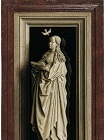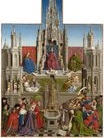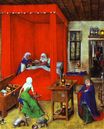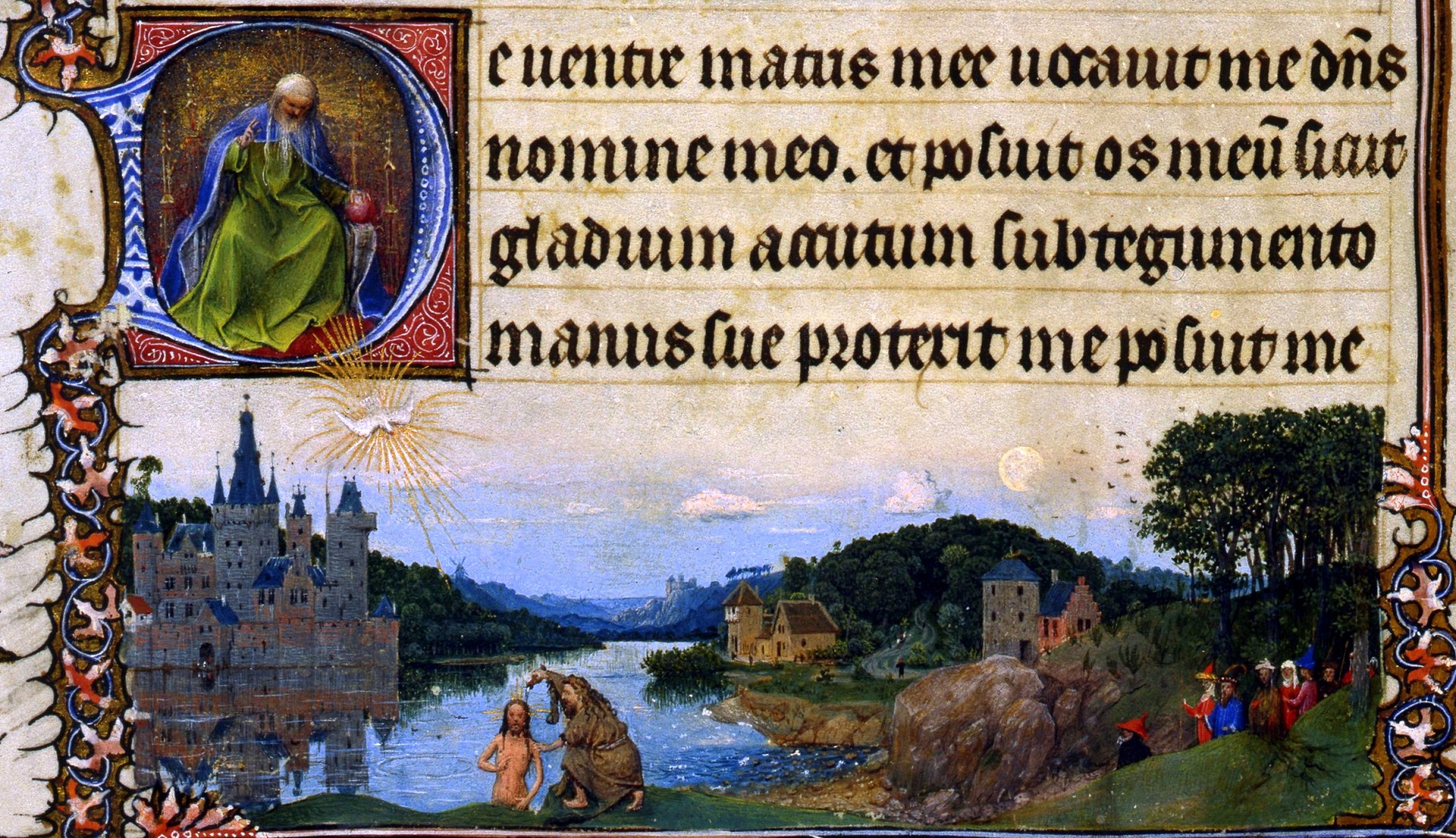Jan van Eyck - Baptism of Christ, detail of a page in the 'Heures de Turin' 1422
 |
 |
 |
 |
 |
 |
 |

Baptism of Christ, detail of a page in the 'Heures de Turin' 1422
Museo Civico d'Arte Antica, Turin, Italy
<< Previous G a l l e r y Next >>
From Wikipedia, the free encyclopedia:
The Turin-Milan Hours (or Milan-Turin hours, Turin Hours etc.) is a partially destroyed illuminated manuscript, which despite its name is not strictly a book of hours. It is of exceptional quality and importance, with a very complicated history both during and after its production. It contains several miniatures of about 1420 attributed to an artist known as "Hand G" who was probably either Jan van Eyck, his brother Hubert van Eyck, or an artist very closely associated with them. About a decade or so later Barthélemy d'Eyck may have worked on some miniatures. Of the several portions of the book, that kept in Turin was destroyed in a fire in 1904, though black-and-white photographs exist.
Work on the manuscript began around 1380 or 1390, and over the course of almost sixty years involved a variety of artists, assistants and patrons during perhaps seven separate campaigns of work. Its conception and first leaves were commissioned by a high-ranking member of the French court whose identity is now lost, and involved mainly French artists. Before 1413 it was in the possession of Jean, Duc de Berry; by 1420 in that of the Count of Holland John of Bavaria, who contracted mostly Flemish artists.
The early leafs are highly decorative and ornate and completed within International Gothic traditions, with stylized backgrounds but comparatively flat depth of field. The pages thought to have been compiled from the mid-1410s show particular skill in portraying perspective, especially those attributed to Hand G.